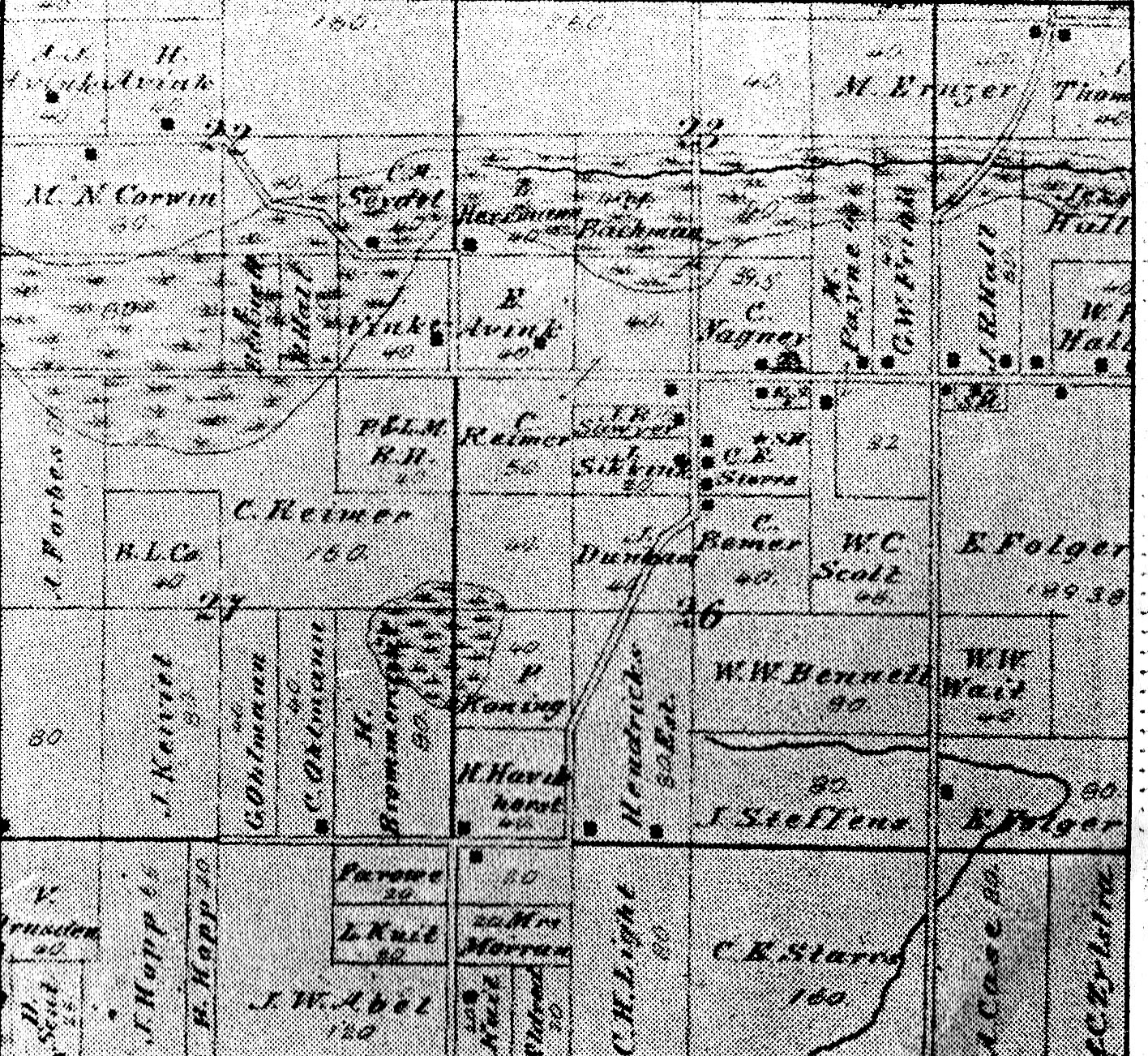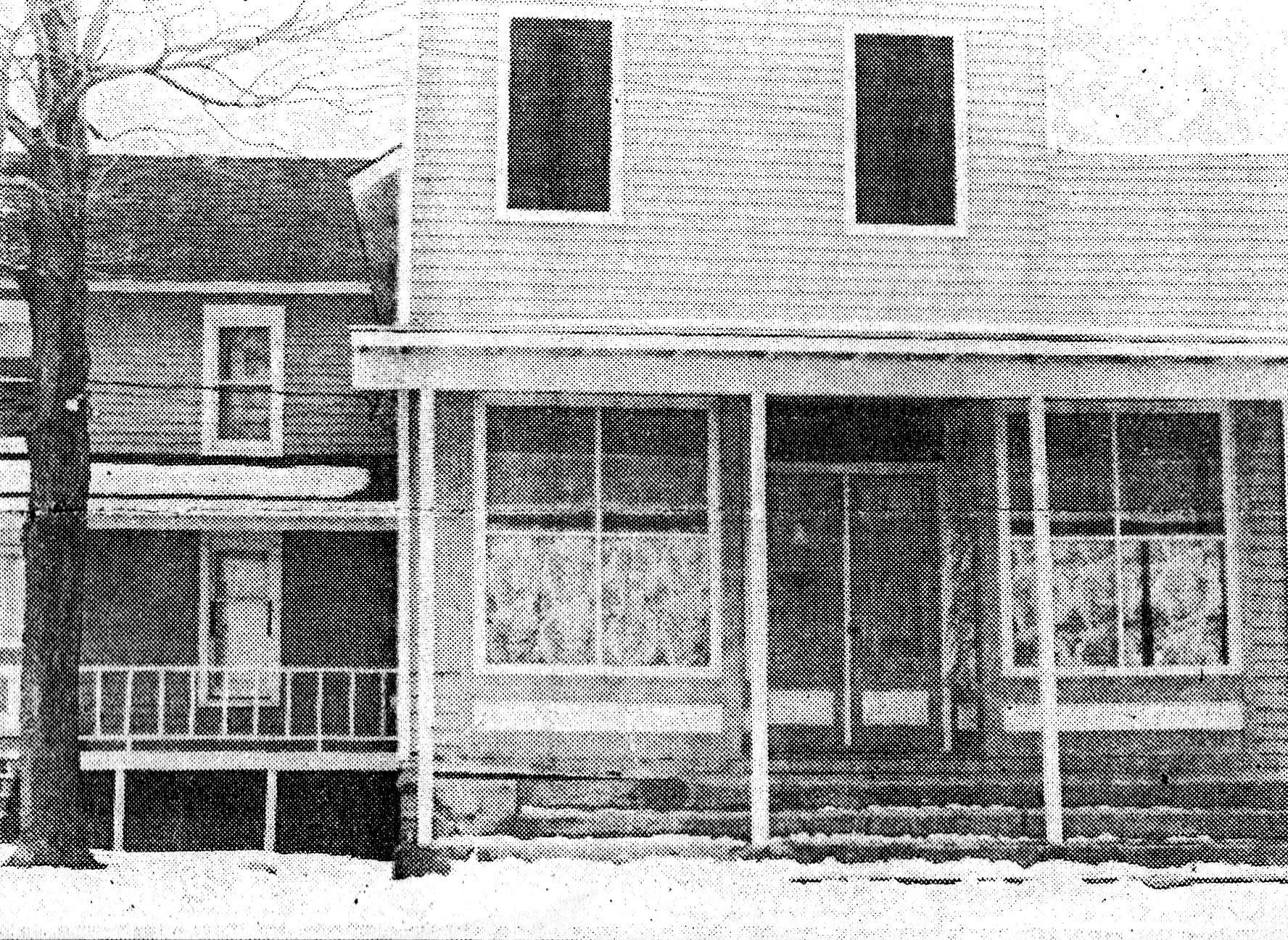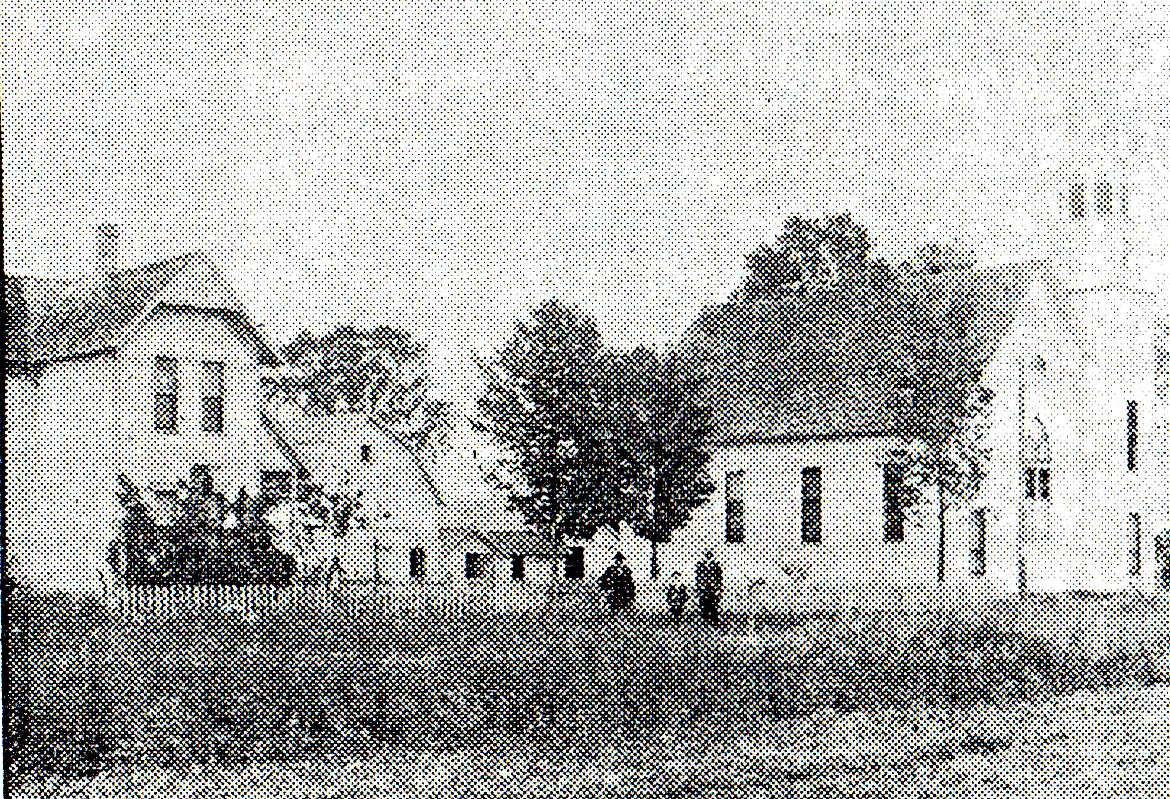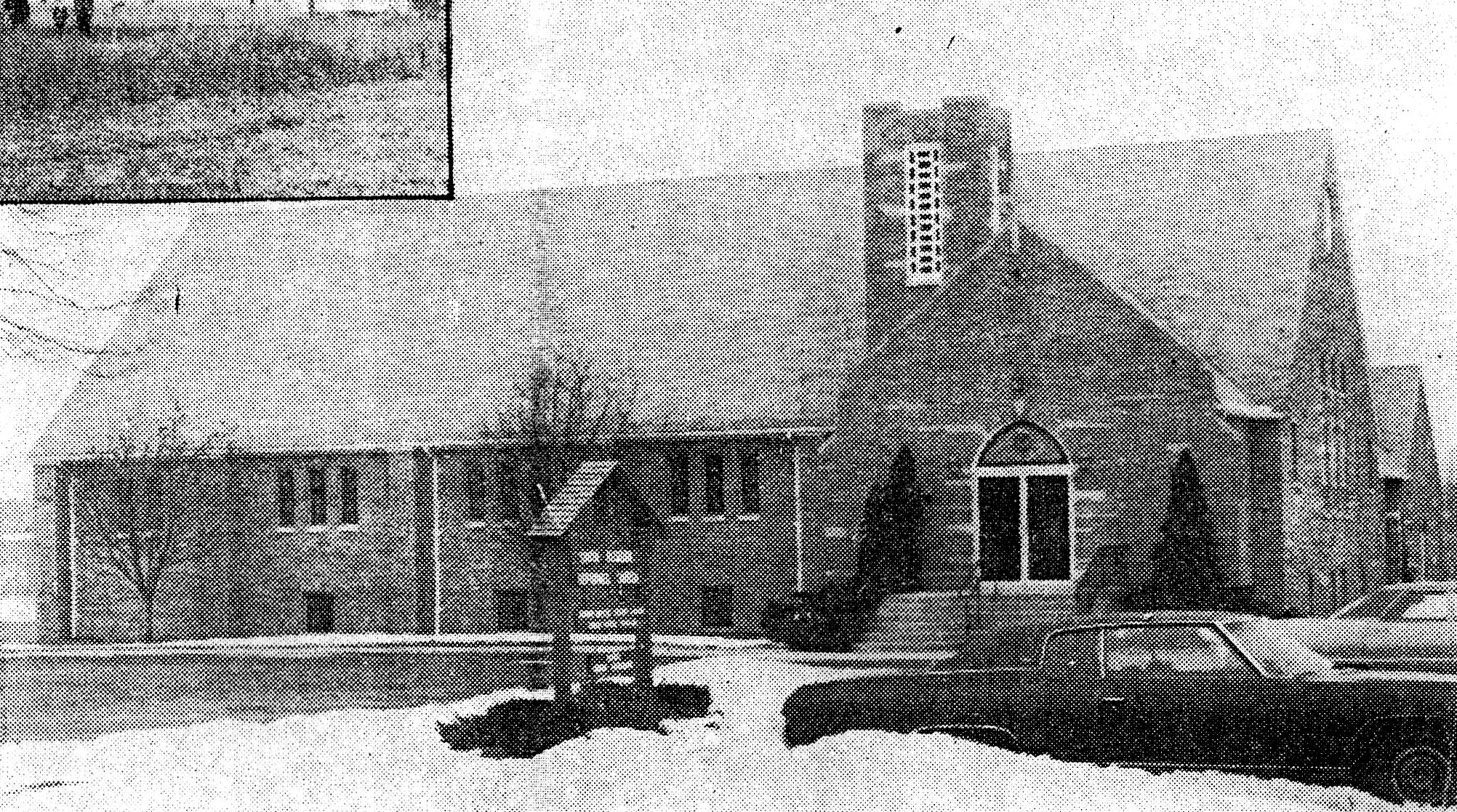|
South Blendon and Blendon Township
South Blendon - Tall white pines, dancing only to the wind, once filled this
isolated countryside. Only furry animals needed the precious wood for shelter
from the wind and storm.
As they danced to the sound of their own drummer, another drummer in the
distance was pounding his own beat.
The invasion of this wood in the mid-1800's was by white settlers comprised
mostly of Germans and Englishmen, as they began to chop away at the wilderness.
"Timber-r-r" soon became the sound often heard in South Blendon during the early
days.
Logging rail lines branched out from this hamlet during the 1860's and 1870's.
Lumbering was the sole industry then. There was also a stagecoach line nearby
and by 1880 the first church was constructed by the inhabitants who began
arriving in the 1870's - the Hollanders.
When the Hollanders began to move in, the lumbering region was largely owned by
the Blendon Lumber Company. So was most of the township. Today it is mainly an
agricultural center. South Blendon is bounded unofficially by 48th and 60th
avenues, and Port Sheldon and Baldwin streets.
Most of the history of the area is contained only in the minds of local
historians. A lot of this information was handed down to them.
According to local oral historians, there were six sawmills operating at various
stages in and around the South Blendon area between 1850 and the turn of the
century.
The first mention of sawmills begins with Mrs. Luke Hubbard's father, Ernest
Seydel. He used to talk about an old boarding house for lumberjacks, located at
48th Avenue and Baldwin Street, which burned down in the 1870's. Mrs. Hubbard,
3297 Spring St., Hudsonville, said her father told her the Hayden Mill was
located there at one time, but has no ideas when it was active (prior to 1864).
Ernest Seydel, born 1862, was the son of C. A. Seydel, one of the first settlers
in the area.
Prior to 1876 a mill operated on Baldwin Street. According to Norm Kunzi, 73,
6255 Baldwin St., this was Cole's Mill located a half mile west of 64th Avenue
on Baldwin. His grandfather, Horace Atwood, came from New York to work in the
mill nicknamed "Bugmill".
Atwood rafted the logs on the Grand River in Grand Haven. As a sailor, he had
traveled three times around the world. Kunzi said he remembers his grandfather
telling him "there was an Indian village in Eastmanville and they would stay
there overnight".
The logs reached the Grand River on quickly-fashioned, thin-steeled rail lines.
The logs were stamped with the signature "Bl" with a sledgehammer-like
instrument for identification, then floated down the river to a Grand Haven
sawmill.
Grandfather Kunzi built a mill himself in the 880's, located across from his
house. Another mill, Timmer Mill, was located on the northwest corner of 56th
Avenue and Baldwin Street. Ernest Seydel worked his mill in the 1880's. It
closed in the 1890's. Kunzi Mill was the last of these three to be torn down.
Kunzi recalls (between 1900-1910).
Working in a sawmill was dangerous. If one wasn't careful. Kunzi said his Uncle
Edson had his arm ripped off after he got it caught in the sawdust chain.
Two sawmills on Port Sheldon in South Blendon were active in 1876, according to
the 1876 plat map. One was the Ohio Mill, according to Gerrit Elzinga, 6640
Tyler St. A man named Tuller ran the mill, Kunzi said, before the turn of the
century. It was owned by C. E. Storrs in 1864. These mills also do no exist
today. The only remnants are rail lines, which are still being uncovered.
Ohio Mill was locate south of one of the two stores on Port Sheldon Street. All
mills were built on knolls. The store still stands (one mile west of South
Blendon Reformed Church. It is now a meat processing store. The other mill was a
very small one, notes Elzinga. It was located on the southeast corner of 48th
Avenue and Port Sheldon, according to the plat map, directly south of property
owned by J. R. Hall.
On the southwest corner of 48th Avenue and Port Sheldon Street, a small general
store opened in the 1890's. This was owned by John VanFarowe. It later burned
and a new one was put up. The site now contains a building for a coffee service
warehouse. Two years ago a grocery did operate there.
The present meat processing store opened first as a general store. It was owned
by John Poskey and later Harold Vruggink.
In addition to the two stores and two sawmills on Port Sheldon Street, South
Blendon had a post office before the advent of rural free delivery. It was
located one block south of Port Sheldon on 56th. There was also a grist mill
west of 56th, Elzinga said.
The logging industry was not the only activity during the early settlement of
South Blendon.
A rambling stagecoach thundered along the route below South Blendon and to the
east, from Holland To Grand Rapids in the mid-1800's. part of that line is now
Paw Paw Drive in the Holland area. Near South Blendon there was a halfway house,
called Deregt House, or the "Right House", which functioned as a rest stop for
weary travelers, Elzinga explained.
Part of that line is still in evidence today. About three-quarters of a mile
east of South Blendon there is a row of maple trees. These were planted along
the line.
Between 1864 and 1876 a railroad was proposed from Grand Haven to Toledo. The
area was graded, but the firm went bankrupt.
The English and Germans did not farm the lowlands of South Blendon because they
felt the area was unsuitable for farming. But they did work the more fertile
land in the northeast portion of Blendon Township.
When the Hollanders arrived, they put their expertise to work draining the
fields. Their knowledge was gained from working the poor farmlands of Vriesland
in The Netherlands.
Although the roots of South Blendon come from the logging industry, the actual
settlement didn't occur until the Dutch arrived. When they came they began to
drain the land into what is now Rush Creek and established an agricultural
region.
"About hald of the people in the area were of Vriesland (Province) background,
which is very low land in The Netherlands. So they came over here very
knowledgable", Elsinga said.
"The Original timer was cut off during the Civil War", said the 75-year-old
Elzinga who farmed the area all his life. "White pine was the favorite of
loggers because it was easily worked and ideal for building. When my folks came
here there was a second growth, he added.
Blendon Township was surveyed in 1833 but for various reasons it was not
regarded as a desirable piece of land, because it lay back from the Grand River
and the highway, according to an 1876 almanac of the region. Produce listed in
1875 consisted of wheat, corn, other grain, potatoes, hay, wool, butter and
maple sugar. Farm animals filled the township. There were 20,000 bushels of
grain and 700 tons of hay produced then. Two post offices served the population
of 693, but no business district existed.
Curiously, South Blendon is not located due south of North Blendon. At one time
it did, but North Blendon moved west and changed its name to Bauer. Elzinga said
a man named Bauer bought the land after the Blendon Lumber Company "was a thing
of the past", and named the town after himself because he was the biggest
landowner in the area.
Bauer at one time boasted a creamery, three stores, a feed mill and a blacksmith
shop, Kunzi said.
In 1876 the Dutch found no established church in the area. A group of people
began to gather for religious services under the leadership of Eeltje Ezlinga,
Gerrit's great uncle. The fledgling church held services wherever it could - in
barns, houses and stores.
The first sanctuary was built in 1880, at its present location, on an acre of
land donated by Anthony VerHulst. There was a breakup in 1881 after the Free
Mason question arose but two years later the two bodies joined together again.
In 1883 the church organized with the names of Holstege, Elzinga, Nieuwenhuis,
Stegeman, Koekkoek, Williams, TerHaar, Vruggink, Beamers, Mouw, Mekkes, Sikkink,
Steffens and Vinke. There were 35 in thar first membership.
With the congregation in need of a minister, the members built a parsonage in
1886. Gerhard DeJonge became the first minister in 1887. A new church was built
in 1891 and the old one was moved across the street after it was sold to John
VanFarowe, and converted into a general store. This burned later, and another
store was built on top of the ashes.
Construction on the present church began in 1955.
Herman Vruggink, the oldesT active member of the church, remembers the
commemoration in late April because on April 3, 1956 a tornado went through
about 1 1/2 miles south of South Blendon.
Herman Vruggink's grandfather settled in South Blendon in 1872, buying 100 acres
from C. Reimer. Vruggink's grandparents arrived directly from the Netherlands
after making a stopover in Grand Rapids. They settled 1 1/2 miles west of the
present church. Herman Vruggink lived there for 65 years before moving to his
present location.
Vruggink, a former dairy farmer who will be 80 on February 13 and married 55
years to the former Dorothy Johnson on February 24, attended the schoolhouse on
Port Sheldon. The first one was built in the 1880's but was destroyed by fired
in 1908. The existing school (between 56th and 60th avenues on the north side)
was later erected. It is now used for storage by Hudsonville Public School.
Schooling there only went through the eighth grade. Final exams were taken in
Holland at Hope College. Every child in Ottawa County went to Holland for their
exams. To get there, Vruggink said he had to walk 3 1/2 miles to Vriesland
before hopping a train to Holland. He graduated in 1914 and the exams lasted two
days.
Now new residences dot the landscape, and there isn't a dairy farmer among the
270 families attending South Blendon Reformed Church.
|





